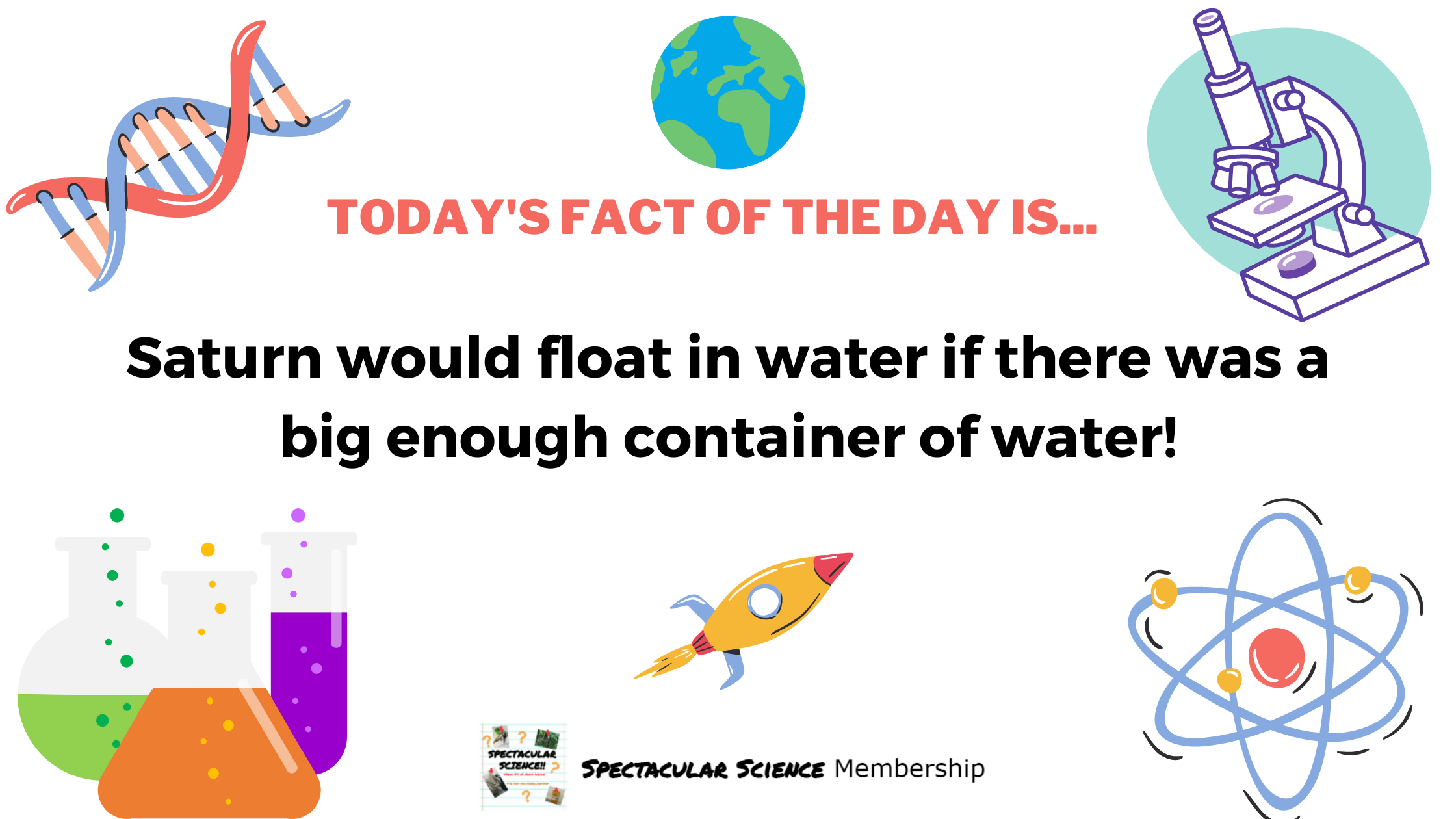
Saturn is the 2nd largest planet in the Solar System behind Jupiter! It is made of hydrogen, helium, and methane. Saturn could fit over 700 Earths inside of it! That is how big this gas giant is. But, how would a planet this size float on water? It’s all because of density.
Density is the amount of “stuff” (molecules and atoms) that are packed into one space. Objects’ density can be found by dividing the mass (weight) of an object by the volume (space it takes up) of an object. Density is measured in grams per milliliter (g/mL). If something has to float on water, than the density would be smaller than the density of water. If something has to sink in water, it’s density is greater than the density of water.
Water’s density is 1 gram per milliliter (g/mL). If Saturn would float if put in water, that means that Saturn’s density is LESS than the density of water! The estimated density of Saturn is 0.7 grams per milliliter (g/mL). That is less than the density of water. That means that even though Saturn is a gas giant, it would float in water…assuming we have a big enough bathtub (which we don’t have)!!
Remember to come back to the “Fact of the Day” page for tomorrow’s fun fact!

